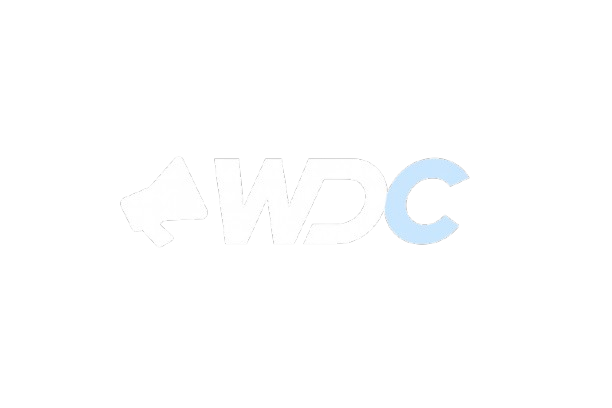In the fast-paced business world of 2026, scaling has become both an opportunity and a challenge for entrepreneurs. The rise of digital tools, artificial intelligence (AI), and low-cost automation has opened doors for small and medium businesses to expand operations without requiring massive capital. Companies no longer need to depend solely on heavy investments in infrastructure or manpower to grow; instead, they can leverage smart strategies and technology-driven solutions to achieve sustainable success.
At WDC, we’ve witnessed firsthand how businesses of all sizes can scale efficiently when they adopt the right systems, focus on customer-centric models, and embrace innovation without overspending. This article explores how entrepreneurs and companies can achieve growth with minimal investment in 2026.
Understanding Scaling in 2026
Scaling a business means increasing revenue and market reach without proportionally increasing costs. Unlike traditional growth, which often relies on expanding physical assets, scaling emphasizes efficiency, automation, and technology adoption.
In 2026, three major trends define business scaling:
- Technology-First Expansion – Businesses rely on AI, SaaS platforms, and digital marketplaces to reach global audiences.
- Lean Operations – Outsourcing, remote work, and freelancing models help cut unnecessary costs.
- Sustainable Growth – Companies focus on eco-friendly, cost-effective strategies that attract conscious consumers.
Strategies to Scale With Minimal Investment
1. Leverage AI and Automation
AI tools are now affordable and accessible for businesses of all sizes. From chatbots that handle customer support to predictive analytics that forecast demand, AI reduces costs while boosting efficiency.
- Automate repetitive tasks like invoicing, scheduling, and email marketing.
- Use AI-driven marketing platforms to personalize campaigns at scale.
- Deploy AI-powered analytics to identify new opportunities without spending on large research teams.
2. Adopt a Remote-First Workforce
The global workforce has shifted towards flexibility. Instead of hiring full-time, in-office staff, many businesses scale by:
- Building teams of freelancers and contractors.
- Outsourcing specialized roles (e.g., design, copywriting, IT).
- Using project management tools like Asana, Slack, and ClickUp to keep teams connected.
This reduces overhead costs while allowing businesses to tap into global talent.
3. Focus on Digital Marketing
Instead of costly traditional advertising, businesses can grow through digital-first strategies:
- Organic growth through SEO and social media content.
- Influencer collaborations on platforms like TikTok, Instagram, and LinkedIn.
- Email marketing automation to nurture long-term relationships.
Low-cost, high-impact marketing helps businesses expand their reach without stretching budgets.
4. Utilize No-Code and Low-Code Tools
Building apps, websites, or internal tools no longer requires hiring full-scale developers. Platforms like Webflow, Bubble, and Shopify allow entrepreneurs to create functional systems at minimal cost. This democratization of technology empowers businesses to launch faster and scale affordably.
5. Build Strategic Partnerships
Collaborations with complementary businesses reduce marketing and distribution costs. For example:
- A café partnering with a coworking space to attract professionals.
- A digital marketing agency partnering with a SaaS company for bundled services.
- Cross-promotions with local brands to share customer bases.
Such partnerships create mutual growth opportunities without requiring large investments.
6. Focus on Customer Retention
Scaling doesn’t always mean finding new customers—it also means maximizing value from existing ones.
- Implement loyalty programs.
- Offer personalized discounts and upselling opportunities.
- Provide exceptional customer service to turn buyers into brand advocates.
Customer retention is cheaper than acquisition, making it a smart low-cost growth strategy.
7. Adopt Sustainable Business Practices
In 2026, eco-conscious customers favor businesses that prioritize sustainability. Cost-effective measures such as reducing packaging, going paperless, and optimizing supply chains not only cut expenses but also strengthen brand image.
Real-World Example: Scaling With Minimal Investment
Consider a small e-commerce store in Pakistan selling handmade accessories. Instead of investing in physical outlets, the business scales by:
- Using Shopify for an online store.
- Leveraging TikTok and Instagram Reels for organic marketing.
- Outsourcing design work to freelancers on Fiverr.
- Automating customer service with chatbots.
- Partnering with local influencers for collaborations.
Within a year, the store expands internationally—all without heavy upfront investment.
The Role of WDC in Business Scaling
At WDC, we specialize in helping businesses adopt technology-driven strategies that minimize costs and maximize growth potential. Whether it’s through AI-powered marketing, automation tools, or strategic consultancy, we provide the expertise and platforms businesses need to scale efficiently.
Our approach focuses on:
- Building sustainable growth strategies.
- Guiding entrepreneurs in adopting cost-effective digital solutions.
- Offering AI-powered insights for smarter decision-making.
With WDC, businesses can achieve exponential growth without falling into the trap of heavy, unsustainable investments.
Conclusion
Scaling a business with minimal investment in 2026 is not just possible—it’s the new standard. With the rise of AI, automation, digital marketing, and remote work models, entrepreneurs can achieve remarkable growth without relying on large budgets. The focus is on smart scaling: working lean, leveraging technology, and prioritizing customer experience.
Businesses that embrace these strategies today will be tomorrow’s market leaders. With partners like WDC, companies can confidently scale while keeping costs under control.
FAQs
1. What is the difference between growth and scaling in business?
Growth usually requires increased investment in resources like staff, equipment, or space. Scaling, on the other hand, increases revenue without proportionally increasing costs.
2. Can a startup scale without external funding?
Yes, with AI tools, freelancing platforms, and digital-first strategies, startups can achieve significant growth without needing large capital or investors.
3. What are the best tools for scaling with minimal investment in 2026?
Some popular tools include Shopify (e-commerce), Zapier (automation), HubSpot (CRM), Canva (design), and ChatGPT-powered assistants (customer service and content).
4. How does WDC help businesses scale?
WDC provides AI-driven marketing solutions, consultancy, and technology adoption strategies that reduce costs while increasing business efficiency and reach.
5. Is sustainability a profitable scaling strategy?
Yes. Consumers increasingly prefer eco-conscious businesses, and sustainable practices often reduce costs (e.g., less packaging, energy savings), making them both profitable and responsible.

